Genre: Shmup Developer: Probe Software Publisher: Sega Enterprises Players: 1 Released: 1992
In 1990, Sega’s After Burner II was still a popular arcade game. It had just received a good port to the Genesis, when Sega offered up something new that was clearly inspired by that classic flying game… G-LOC: Air Battle. It would be three years before this new arcade game saw a port to the Genesis. So, how’d the port turn out? Read on.
In the Genesis game, you’re a lone pilot who must take on the enemy. You’ll have to fly through four missions, with upwards roughly ten “sections” in each mission. In each section, you must blow up a certain number of enemies within a given time limit to continue, while trying not to get shot down by enemy guns, missiles, or accidentally ramming into another plane. You’ll have to use your guns, missiles, and flying skills, to make it through to victory.
Graphically, the game can’t keep up with Sega’s Y-board obviously. But it does try to do a respectable job given the capabilities of the Genesis. Some of the grounds look like good facsimiles of the arcade (city, and one type of ocean and ground), while other grounds look bleak and really lack any detail (clouds, another type of ocean, and desert). The planes, however, still have a nice amount of animation as they bank and spin, and the scaling’s pretty good on the planes and ground targets. Sadly, the same can’t be said for the scaling of the rock pillars on some stages, which have a jerky and rough motion as they move. The cinemas and such also warrant a mention, as they look rather nice. The result is a hodge podge of good and bad visual traits.
Aurally, the game does alright. The music, done in Probe Software’s familiar aural style, fits with the action, and features some nice tunes. The sound effects are done pretty well, with explosions, missile launches and guns that sound alright. However, you have heard better effects for these things in other games on the Genesis… like in After Burner II. Yes, the effects in that older Genesis game were staticy sounding, but they sounded more like missiles, guns and explosions than what’s in G-LOC. So, like the graphics, the sound design has its ups and downs.
The Genesis version of G-LOC: Air Battle had a few tweaks done to its gameplay. First, you’ll be able to purchase various upgrades to your armor and guns between missions via a nicely detailed briefing room. On the downside, you’ll also have to purchase ammo for your air-to-air and air-to-ground missiles, as these things aren’t refilled for you. To earn the money for all this, you must land your aircraft safely at the end of each mission… something that gets harder to do each time. If you crash into the carrier, you’ll still get some bonus cash, but not nearly as much. There’s also the addition of squadrons on each of the four missions. These squadrons come in the form of colored jets, and if you shoot down each one that pops up during battle, you’ll get extra cash upon landing.
Besides the upgrades and money, one final significant change about the gameplay needs to be addressed. This is regarding the camera views. In the arcade, you went from cockpit to chase view when an enemy tried to attack you from behind. On the home version, you never have an enemy plane chase you like that, but the camera view still changes from section to section for seeming no other reason than to add diversity to the game in an unwarranted fashion.
Doesn’t sound too bad right now, does it? Well, there are some unfortunate problems that keep the game from rivaling the same adrenalin rush you got from the game that inspired it. First, G-LOC doesn’t have the sense of speed that you would expect it to have. For a game that was obviously inspired by After Burner II, it feels more like you’re flying a passenger jet than a fighter. Second, there’s never more than a handful of planes on the screen, and they rarely fire the moment they pop up. This gives you plenty of time to lock-on and take them down before they can even attack. And as if that weren’t enough, the enemies that fly past you from behind are painfully simple to take down. Couple all that with the fact that the ground missions aren’t any better since the targets don’t fire until they’re closer to you, and it’s a game that just doesn’t get the blood pumping.
Another issue comes with the locking on process itself. Your reticule moves slowly towards the targets, making things frustratingly tedious as the planes quickly spin around and zoom into the distance on the later missions. But perhaps one of the most annoying issues is with the gun. In cockpit view, the gun is amazingly useful. But in chase view, it has sporadic bouts of inaccuracy. What you hit and destroy in the distance on one section, somehow stops getting hit on another section. This becomes more noticeable as you get further into the game. Even with the ability to hit your after burners, and catch up to planes that are getting away, the gun accuracy drop is still evident. This leads to some frustrating moments as you try and beat the timer… especially when you’ve run out of missiles, and only have your guns.
So what can be said about G-LOC: Air Battle? Well, Probe tried. They got some aspects right, while flubbing others. There’s simply an undeniable sense of sudden rush job in the game… like it was initially getting the attention it needed to be a pretty good port, and then the project was hurried along for a deadline. The result is a mishmash of good stuff and bad stuff, that drags the game down. And honestly, what is it with HQ and their needing fifteen targets shot down? Do they have a quota they have to meet? G-LOC is not a horrid game, but you can see that it could, and should, have been better. As it is, the game’s coming in for a landing on the USS Mediocre.
SCORE: 5 out of 10

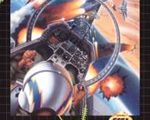
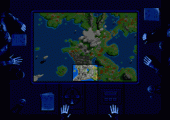
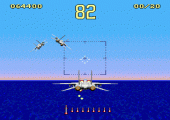
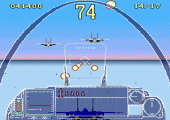
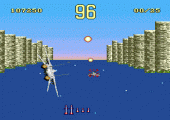
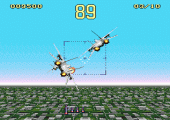
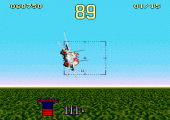
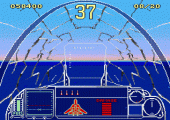
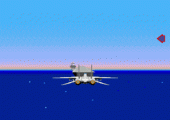
Recent Comments